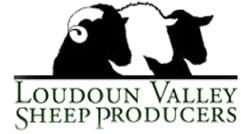Hog Island
The Hog Island sheep is a feral breed, descended from sheep abandoned on Hog Island in the 1930s and ’40s. It is believed that the breed was descended from the Merino breed, among others, possibly the Improved Leicester or other English breeds. The sheep is relatively small but tough and hardy.
Read MoreCotswold
Cotswolds are a large breed, noted for their long, coarse fleece of naturally wavy curls and the tuft of wool on their foreheads. The earliest record of Cotswolds in the United States is 1832. The Cotswold is classified as a “rare” breed by the American Livestock Breeds Conservancy.
Read MoreCormo
The Cormo was developed in the earlier part of the 1960′s in Tasmania, Australia. To arrive at the current day Cormo rams of the Corriedale breed were crossed with Superfine Saxon Merinos. The name Cormo is from the names of two of the parent breeds, Corriedale and Merino. They are a polled breed.
Read MoreCheviot
The Cheviot is a long-wool type, hornless and of reasonable frame. Cheviot wool has a distinctive helical crimp, which gives it that highly desirable resilience. Cheviot wool is often blended into other yarns to give resilience and durability to the finished article. The fleece is dense and long-stapled, of 56s-50s quality, and springy to the touch.
Read MoreBluefaced Leicester
The Bluefaced Leicester is of the English Longwool type of sheep. They originated from Border Leicester individuals selected for the blue face (white hairs on black skin) and finer fleeces. The wool is classed as demi-luster and fine.
Read More